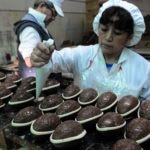The crisis didn’t kill Argentina’s SMEs; it made them stronger
Argentina’s small and medium sized enterprises, despite being pummeled by taxes and struggling to access credit, managed to survive the collapse of consumption. Now, they are gearing up to capitalize on the improving economic outlook, thanks to the lending and tax measures that the government will roll out in short to encourage them to invest. Four our of every 10 companies say they intend to do so.

The title of the presentation that Marcelo Capello - Chairman of Fundación Mediterránea’s Institute for the Study of the Argentine and Latin American Reality (IERAL) - delivered during the SMEs Seminar held in Cordoba in June 16, offered an accurate prognosis of the country’s current situation: “Macro & SMEs in an economy in transition.”
And the 2016 year-end report, prepared by the NGO’s sectorial specialist Marcos Cohen Arazi added more detail to an already grim landscape: As a result of Argentina's economic downturn between 2012 and 2016, creation rates for microbusinesses (which are 40 per cent retailers and industrial companies) suffered a severe stagnation which continued until the first four months of the year in the manufacturing sector (with production levels 15% lower than those recorded in 2013) and in a more lasting form, in the retail and service sectors.
This year the outlook is somewhat brighter, with a slight rebound in the economy as a whole, despite significant regional disparities, and moderately higher growth in durable goods. Regarding SMEs, at nationwide level, the situation is a bit less positive.
Small and medium sized enterprises and microbusinesses account for 64% of formal jobs in the country"
However, the most positive signs have come from construction businesses (which represent 4 per cent of the total number of microbusinesses): In March they posted double-digit growth rates, especially companies engaging in the manufacture of agricultural machinery, spare parts and accessories for agricultural machinery, and excluding larger machines, such as tractors and harvesters, which are normally built by larger companies.
According to IERAL’s measurements, which include manufacturers of spare parts and accessories, in Córdoba province activity improved by 40 percent in the first quarter. Industrial plant occupation rose sharply, reaching 76 per cent, a notable improvement from the 58 percent low recorded in 2015. The manufacture of agricultural machinery, spare parts and accessories accounts for 78 per cent of the jobs in Cordoba and Santa Fe provinces.
The remaining 605,626 active small and medium businesses in the country are waiting for the implementation of the credit and tax measures. Of these companies, 99 per cent have less than 200 workers, and 72 per cent are based in just four jurisdictions.

The productive investment lines provided by banks are the most used by SMEs.
The national employment policy depends to a large extent of what happens with SMEs and micro-businesses. Indeed, these enterprises generate 64 per cent of the nation’s formal jobs, but their contribution to employment is even larger, considering the amount of informal jobs they also generate. Larger enterprises (3,547), on the other hand, account for 36 per cent of jobs, but represent just 0.6 per cent of the country’s business spectrum (856,300 firms), according to the “GPS of Argentine Businesses” report, published by the Ministry of Production, a digital platform created to disseminate data from Argentina’s productive system.
From weakness to opportunity
Determining the new factors of sustainable growth in the present and coming years will be the biggest challenge for SME development. So far a public policy draft has been passed introducing modest tax cuts and newly created financing mechanisms. The policy’s impact has been undermined by the persistent stagnation in mass consumption rates, the key driver of growth in recent years.
As IERAL revealed, less than 3 per cent of SMEs have access to the different lines of the fund administered by the Ministry of Production of the Nation (Fonapyme), intended to provide funding for everything, from investments to working capital, at a general interest rate of 16 per cent and a differential cost for single tax system taxpayers ('monotributistas'). Another 26 per cent of SMEs intend to apply for one of these loans in 2017, but 70 per cent have disregarded that possibility, according to IEARL SME researcher Marcos Cohen Arazi.
High taxes and labor and employment lawsuits undermine not only SME competitiveness, but also the transition of many of them from the informal to the formal economy"
Regarding the credit lines offered by the Federal Investment Council (CFI - Consejo Federal de Inversiones) at a 14 per cent rate, the situation is basically the same. Three out of every four small and medium sized enterprises did not apply, do not intend to apply or had their applications rejected.
On the other hand, businesses are more aware of resort more to the government-sponsored productive investment lines that banks offer, subject to a 17% annual interest rate and five-year maturity term. About 20% of SMEs received or applied for this type of loans, and another 28 per cent is considering applying for one this year. The firms had a similar behavior with respect to the usual financing of commercial lines.
According to the Cordoba research institute, equity capital is still the main source of funding for these companies (for 38 per cent), while 24 per cent finance their operations resorting to supplier credit, 18 per cent discount bank checks and 16 per cent resort to private loans.
“Today, SMEs pay the same taxes as large corporations,” says Martín Trubycz, Deputy Secretary of Micro, Small and Medium Sized Enterprises of the city of Buenos Aires, a city that is home to 153,000 SMEs: More than 30 per cent registered after the rollout of the automatic regime for entrepreneurs.